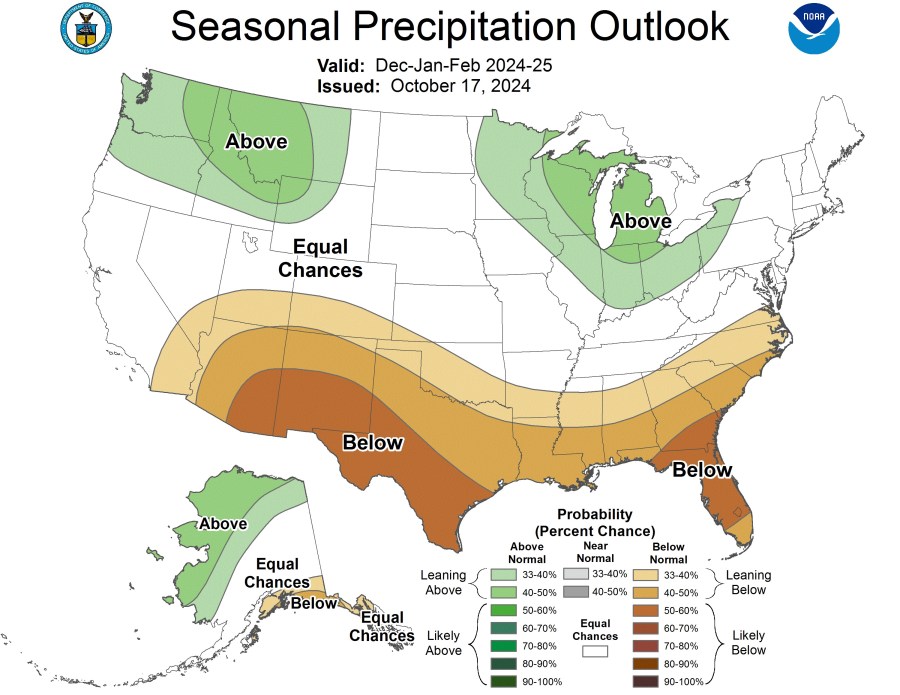(NEXSTAR) — Depending on where you live in the U.S., this winter could bring a mix of snow and rain or an unseasonably warm start to the season, according to climate experts.
The National Oceanic and Atmospheric Administration has released its 2024-25 winter outlook, highlighting a “slowly-developing” La Niña that could shape weather throughout the country from December through February.
“This winter, an emerging La Niña is anticipated to influence the upcoming winter patterns, especially our precipitation predictions,” said Jon Gottschalck, chief of the Operational Prediction Branch of the NOAA’s Climate Prediction Center.
NOAA’s temperature outlook predicts below normal temperatures for nearly all of South Dakota for the winter months of December, January and February.
Snow or no snow? Which way will it go? We’ll look at the atmospheric hints, in the KELOLAND Live Doppler winter special that will air Monday, Oct. 28. at 6:30 p.m. CT.
The Pacific Northwest and Great Lakes regions are more likely to get above-average precipitation this season, meaning states like Michigan, Ohio and Indiana could experience increased rain and snowfall.
Washington, Oregon and northern Idaho could also see a wet winter.
Meanwhile, drier-than-normal conditions could hit the South and Southwest — including parts of Florida, Georgia, Arizona, and New Mexico. The Southern Plains (Texas, Oklahoma and a small portion of southwestern Kansas) may also to see below-average rainfall.

As for temperatures, the NOAA predicts they will be warmer than average for much of the southern U.S.
This warmth is anticipated along the Gulf Coast — in states like Texas, Louisiana, Mississippi, and Alabama — and stretching up the Eastern Seaboard through Georgia, the Carolinas, and as far north as New England. Warmer-than-normal temperatures are also likely in parts of the Great Lakes region and Pennsylvania.
On the other hand, cooler-than-average temperatures are expected for the Pacific Northwest and Northern Plains. States like Washington, Oregon, Montana, and North Dakota may see below-average temperatures, along with some areas in western Alaska.

(Credit: National Oceanic and Atmospheric Administration)
For regions experiencing drought conditions, the outlook offers a bit of good and bad news. Drought relief is expected in parts of Ohio, Indiana, Pennsylvania, and West Virginia.
In the central and southern Plains, however, drought conditions are likely to continue. Texas, Kansas, and Oklahoma are expected to see ongoing dry conditions, with little relief in sight.
Parts of the Southwest, including Arizona and New Mexico, may also experience persistent drought, while the Gulf Coast is expected to face new drought conditions.
Although the outlook gives us an idea of what type of trends to expect this winter, it isn’t a day-by-day forecast. The predictions reflect probabilities for seasonal temperatures and precipitation but can’t predict specific weather events. So be sure to check your local forecast.

